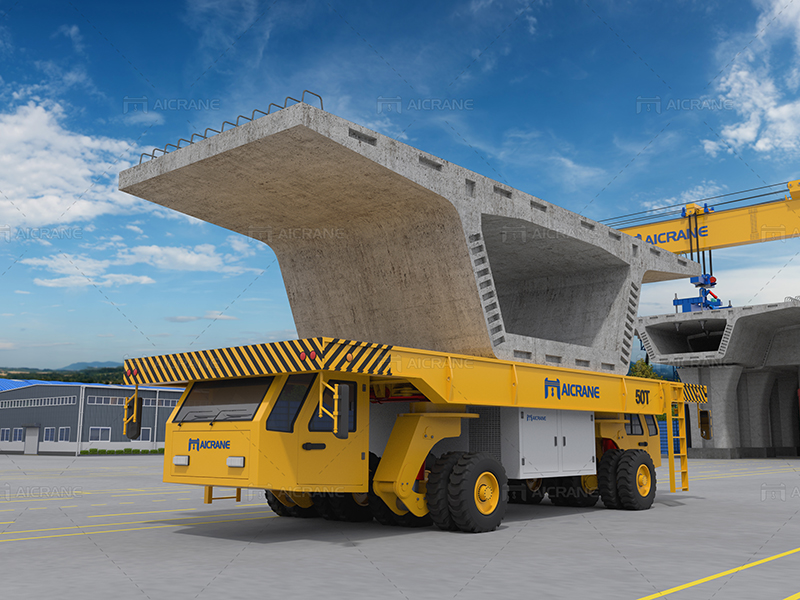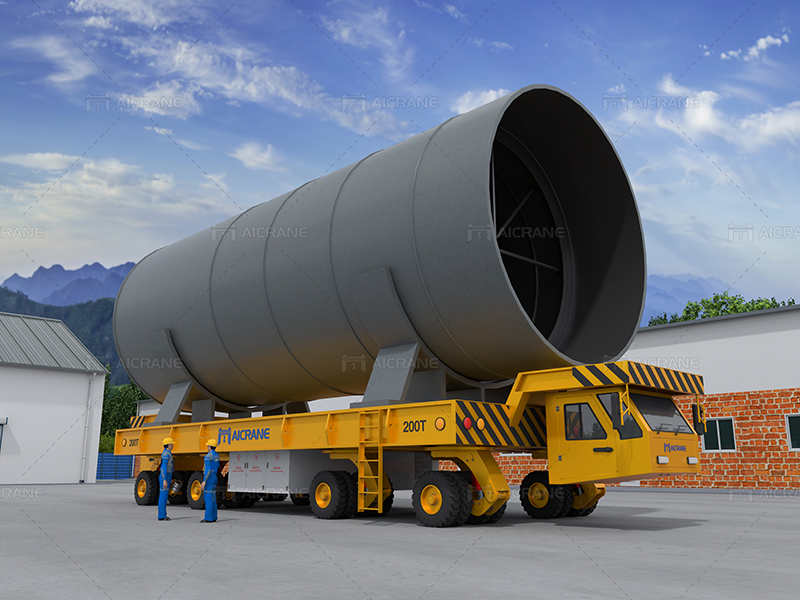In the realm of heavy-duty material handling and transportation, hydraulic transporters stand out as versatile and powerful machines. These specialized vehicles play a crucial role in various industries, facilitating the movement of massive loads with precision and efficiency. In this article, we will delve into the world of hydraulic transporters, exploring what they are, how they work, and the diverse applications that benefit from their unique capabilities.

What is a Hydraulic Transporter?
A hydraulic transporter, also known as a hydraulic platform transporter or self-propelled modular transporter (SPMT), is a heavy-duty, multi-axle vehicle designed to transport oversized and heavyweight loads. These loads can range from large machinery components and construction modules to entire structures such as bridges and petrochemical plant equipment.
Anatomy of a Hydraulic Transporter
Axles and Wheels: Hydraulic transporters typically consist of multiple axles equipped with wheels. The number of axles can vary depending on the load capacity and design of the transporter. The axles are often modular, allowing for flexibility in configuring the vehicle according to the size and weight of the load.
Hydraulic System: The heart of a hydraulic transporter lies in its hydraulic system. This system utilizes hydraulic fluid to control the movement of the transporter, including lifting and lowering the load, steering, and adjusting the height of the platform.
Power Pack: A power pack, usually located on the transporter, provides the necessary hydraulic pressure. It contains the hydraulic pump, reservoir, and control valves, ensuring a steady and controlled flow of hydraulic fluid to drive the various functions of the transporter.
Control System: Advanced hydraulic transporters come equipped with sophisticated control systems. Operators can use these systems to precisely maneuver the transporter, synchronize axle movements, and monitor load distribution. Some systems even offer automation features for increased efficiency.

How Does a Hydraulic Transporter Work?
The operation of a hydraulic transporter involves a combination of mechanical and hydraulic principles. Here’s a step-by-step overview of how these remarkable machines work:
Load Placement: Before loading, the hydraulic transporter is positioned adjacent to the load. The load is typically placed on a specialized platform or trailer attached to the transporter.
Hydraulic Lifting: The hydraulic system is engaged to lift the load from the ground. This is achieved by activating the hydraulic cylinders, which extend and raise the platform. The ability to lift the load is crucial for navigating uneven terrain and overcoming obstacles.
Axle Configuration: The modular nature of the transporter allows operators to configure the axles according to the load’s dimensions and weight distribution. Axles can be adjusted to distribute the load evenly, ensuring stability during transportation.
Steering and Movement: Hydraulic transporters are equipped with steering mechanisms that enable precise control. The operator can manipulate the steering system to navigate tight corners, curves, and obstacles. The synchronized movement of axles ensures a smooth and controlled transport process.
Hydraulic Lowering: Upon reaching the destination, the hydraulic system is used to gradually lower the load to the ground. This process is executed with precision to prevent sudden impacts and ensure the safe unloading of the cargo.
Applications of Hydraulic Transporters
Heavy Machinery Transportation: Hydraulic transporters are widely used in the transportation of oversized and heavy machinery components, such as generators, turbines, and industrial equipment. Their ability to handle immense weights and navigate challenging terrains makes them indispensable in the construction and manufacturing sectors.
Bridge Construction: In the construction of bridges and elevated structures, hydraulic transporters play a vital role in transporting large sections of the bridge, including precast segments and structural elements. Their precision and load-bearing capacity contribute to the efficiency of bridge construction projects.
Offshore Industry: The offshore industry relies on hydraulic transporters to move massive components for oil and gas platforms, including drilling equipment, modules, and subsea structures. These transporters are crucial for efficiently assembling and maintaining offshore installations.
Power Plant Projects: Hydraulic transporters are employed in power plant construction for transporting components like turbines, generators, and large boiler modules. Their ability to handle heavy loads with precision ensures the timely and safe installation of critical equipment.
Shipbuilding: Shipyards utilize hydraulic transporters to move large ship sections and components during the shipbuilding process. The flexibility of hydraulic transporters allows for easy adaptation to the varying shapes and sizes of ship components.
Conclusion
Hydraulic transporters stand as powerful and adaptable solutions in the realm of heavy-duty transportation. Their ability to lift, move, and lower massive loads with precision makes them indispensable in industries that deal with oversized and heavyweight equipment. As technology continues to advance, hydraulic transporters are likely to evolve, incorporating innovative features and automation to further enhance their efficiency and capabilities. In the world of heavy lifting and transportation, hydraulic transporters remain a driving force, ensuring the seamless movement of colossal loads across diverse industries. To learn more, visit https://steelmillcranes.com/